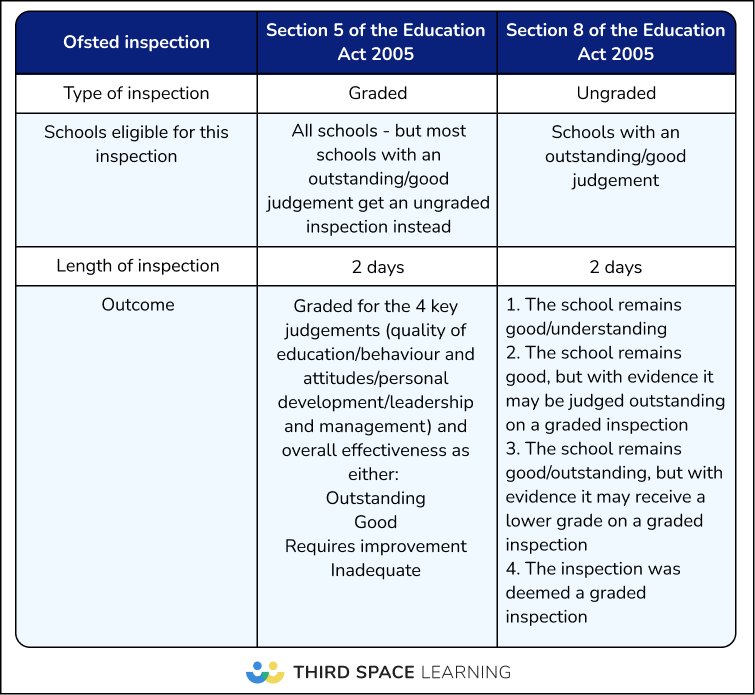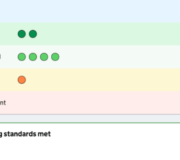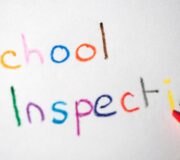Ofsted Grade Descriptors: Everything You Need To Know About How Ofsted Grades Schools
This article was originally published on 24th March 2024. Ofsted has recently released its new Ofsted framework 2025, which uses a new set of descriptors.
Ofsted inspectors use the Ofsted grade descriptors to judge key areas of schools and other education providers. School leaders must understand Ofsted’s grade descriptors and the criteria Ofsted uses to make their professional judgements.
When preparing for an Ofsted inspection, it is important to remember that the purpose of Ofsted inspections is not to take away the autonomy of schools. The purpose is to hold schools accountable and provide parents with comparable data to make informed choices about their child’s education.
Inspectors must challenge education and care providers to help them improve and get the support they need by providing an external, independent evaluation. When framed in this way, school leaders and staff can better understand the Ofsted grade descriptors and role of inspectors, while reducing the stress often associated with an inspection.
As of November 2025, Ofsted ratings have changed. Single headline grades judging overall effectiveness have been scrapped for all state schools. However, schools will continue to be rated in the four key areas of judgement until the introduction of new report cards, which is expected in September 2025.
This article is a good starting point to guide you through an Ofsted inspection, including the key judgement areas, Ofsted grade descriptors and the criteria Ofsted uses to help make their professional judgements.
New Ofsted Framework 2025: Toolkit Checklist
A practical audit aligned with the Ofsted toolkit guidance on school inspections under the new framework for 2025. Includes an actionable checklist.
Download Free Now!What are Ofsted grade descriptors?
Ofsted grade descriptors help to grade different key areas of judgement. Schools are awarded the following Ofsted grade descriptors for each sub-area.
- Outstanding (1)
- Good (2)
- Requires improvement (3)
- Unsatisfactory (4)
As of September 2024, Ofsted will no longer give schools a single-phrase headline judgment for overall effectiveness. New report cards for school inspections are expected in September 2025 and, according to Ofsted, will provide a more complete picture of how schools perform.
When are Ofsted grade descriptors used to judge schools?
Ofsted uses grade descriptors to judge schools during graded inspections, also known as section 5 inspections. These are Ofsted inspections carried out under section 5 of the Education Act 2005 which requires Ofsted to inspect schools at regular intervals.

Meet Skye, the voice-based AI tutor making maths success possible for every student.
Built by teachers and maths experts, Skye uses the same pedagogy, curriculum and lesson structure as our traditional tutoring.
But, with more flexibility and a lower cost, schools can scale online maths tutoring to support every student who needs it.
Watch Skye in actionWhen do schools have graded inspections?
Section 5 inspection intervals should be no longer than 5 years apart, however, if your school’s most recent graded or ungraded inspection was before May 2021, the legal interval is to be no more than 7 years for the routine inspection.
Ofsted generally conducts a routine inspection within four academic years of the last inspection if the school was graded outstanding or good. If the school’s judgement is inadequate or requires improvement, the inspection team aims to return within 2.5 years. You can find more detailed information on when to expect an inspection in the school inspection handbook (paragraph 38).
All schools are eligible for a section 5 Ofsted inspection. However, most (but not all) good or outstanding schools receive an inspection under section 8 of the Education Act 2005, known as an ungraded inspection. The purpose of a section 8 inspection is to confirm whether or not a school maintains its good or outstanding grading and that safeguarding is effective. From September 2024, Ofsted will remove deep dives from ungraded inspections.
Ofsted inspectors use a risk assessment methodology which indicates whether the education provider requires a graded inspection. The elements of the risk assessment that may trigger a section 5 inspection are:
- Data from the DfE
- Parent/carers views
- Complaints made to Ofsted
- Safeguarding or welfare concerns
These factors could also trigger an urgent inspection. Find a full list in the school inspection handbook, paragraph 67. School leadership can also carry out a self-evaluation and request a section 5 inspection themselves.

Which areas are schools judged on using the Ofsted grade descriptors?
Under a section 5 graded inspection, Ofsted inspectors will make a judgement on the following key judgement areas:
- Quality of education
- Behaviour and attitudes
- Personal development
- Leadership and management
Quality of education
To evaluate the quality of education, the inspection team will seek a top-level view of the school’s curriculum through meetings with senior leaders and those responsible for the curriculum.
The deep dive methodology is how Ofsted gains an understanding of the standard of education in the school’s curriculum through the 3 Is: intent, implementation and impact. The inspection team wants to see first-hand the experience of the learners to enable them to understand how well school leaders know what it is like to be a pupil in their setting, including early years provision where applicable. Ofsted expects opportunities to speak with learners and complete learning walks. This will give them the biggest insight into the quality of education.
See the grade descriptors for the quality of education in the school inspection handbook (section 453). This will give senior leaders an idea of what high-quality elements of education Ofsted are looking for and what helps them to make the inspection judgements.
Behaviour and attitudes
Behaviour and attitudes now hold a more prominent place in the new education inspection framework. Ofsted is looking at how providers and senior leaders create a calm and positive environment that promotes positive behaviour and attitudes of the learners and meets children’s needs. Factors that Ofsted specifically looks at are in section 300 of the handbook and include:
- a calm and orderly environment in the school and the classroom
- clear routines and expectations for the behaviour of pupils across all aspects of school life
- strong focus on attendance and punctuality
- clear and effective behaviour and attendance policies with clearly defined consequences applied consistently and fairly by all staff
- developing pupils’ motivation and positive attitudes to learning
- fostering a positive and respectful school culture in which staff know and care about pupils
- an environment in which pupils feel safe, and in which bullying, discrimination, sexual harassment, sexual abuse and sexual violence – online or offline – are not accepted.
Find the grade descriptors for behaviour and attitudes in the school inspection handbook (section 455).
Personal development
Personal development is now a stand-alone judgement area in the new framework. Ofsted wants to ensure that the quality of education extends beyond academics and that schools aim to develop in more diverse areas of life. Inspectors look for evidence that school leaders recognise pupils are influenced beyond school and work to build confidence and resilience.
Personal development comes into different areas of the curriculum and Ofsted will want to see this through a range of areas, including:
- Citizenship
- RE
- PSHE
- RSE
- Visits
- Assemblies
- British values
- Literature
- Extra-curricular activities
Section 326 of the inspection handbook has a comprehensive list of what makes up the evaluation and key judgements for this key area. Grade descriptors for personal development are in the school inspection handbook (section 457).
Leadership and management
The effectiveness of leadership and management is an important aspect of the school inspection. The emphasis here is on how school leaders, governors, and trusts all work in partnerships to have a positive impact on school improvement, the different areas of learning, the standard of education and for some learners, the next stage of their education.
Ofsted looks at factors found through research to ‘have the strongest effect on the quality of education provided’. Some aspects that Ofsted inspectors will explore are:
- How school leaders work in partnership with parents and the community
- Whether professional development for teachers aligns with the school curriculum
- There is a clear, ambitious vision for high-quality, inclusive education with high expectations for all pupils
Find a full list in section 346 of the handbook.
Within this key area, the lead inspector will also make key judgements on the overall effectiveness of safeguarding within the school. Ofsted inspectors expect to see the guidance set out within KCSIE deployed effectively. This document is paramount to ensuring that as a school you are doing everything to promote the welfare and well-being of children. It is also important to understand any recent safeguarding updates. Ultimately, Ofsted’s judgement of safeguarding significantly impacts the overall grading if it is ineffective.
Overall effectiveness
Previously, Ofsted made a key judgement against the overall effectiveness, as well as judgments against the four areas mentioned above. However, these headline judgements for overall effectiveness have been scrapped for all state schools from September 2024.
Schools that have already been inspected and received a headline grade for overall effectiveness will retain it until their next inspection.
How do inspectors gather evidence against the Ofsted grade descriptors?
The purpose of Ofsted is clear, but what do Ofsted look for? Ofsted inspectors look to gather evidence using various techniques and sources. This will inform the judgements they make in their final report. This evidence gathering begins before inspection day during the initial phone call to the headteacher or senior leader.
Phone call
The day before the inspection begins, the headteacher (or senior leader) will receive an initial phone call from the lead inspector. The lead inspector will begin gathering evidence and will have 2 elements of focus: a short conversation planning the logistics of the inspection and a longer self-evaluation focused on the education, curriculum and school’s performance. The inspector will also ask about the senior leader’s welfare and teacher workload. The lead inspector has started to gather evidence with some top-tier questioning. At this point, questionnaires are sent out for parent/carer views.
Deep dive
On inspection day, the inspection team will then carry out a deep dive into their selected subjects. The inspection will speak, meet and question a range of stakeholders to gather evidence, including pupils. It is during the Ofsted deep dive the inspection team will delve into the curriculum, progress, assessment, leadership and management, behaviour and safeguarding. This will provide the majority of evidence for inspectors to make their judgement.
A big part of the deep dive is the judgement made towards the overall effectiveness of the quality of education. Inspectors will evaluate the curriculum using the three Is: intent, implementation and impact. Section 238 of the school inspection handbook is particularly useful here for school leaders. It provides an extensive breakdown of the most important factors that Ofsted considers through their research and inspection experiences.
Read more: The Most Common Ofsted Deep Dive Questions 2024
Triangulating evidence
The priority of section 5 inspections is to gather first-hand evidence. The inspection team will collect, connect and triangulate evidence gathered for each area of judgement through scrutinising records, and documentation relating to pupil’s behaviour, attendance and safeguarding.
Ofsted inspectors will complete work scrutiny, speak with pupils and meet with many stakeholders in the school. In addition, Ofsted will focus on safeguarding to ensure that you are carrying out statutory safeguarding responsibilities. Our article on common Ofsted questions and advice on how to answer can help your team prepare for these discussions.
At the end of the inspection, Ofsted bring together the gathered information to make judgements using the grade descriptors against the key areas: quality of education, behaviour and attitudes, personal development and leadership and management (early years and sixth-form provision dependent on the setting).
Schools may need to provide extra evidence after the inspection. Below, we dive deeper into each Ofsted grade descriptor for each key area of judgement to help you better understand what Ofsted will be looking for.
Are you preparing for an upcoming Ofsted inspection? Read about Ofsted crib sheets and how they can help you and your team prepare.
What are the 4 Ofsted grade descriptors for quality of education?
Outstanding (school inspection handbook section 453)
For a school to be judged outstanding, it must be secure in meeting all of the criteria for a ‘good’ grading and the quality of education must be exceptional.
The school handbook also shares the following grade descriptors for an outstanding judgement:
- The school’s curriculum intent and implementation are embedded securely and consistently. This is evident through outstanding teaching.
- The work set for learners enables them to achieve the aims of the curriculum intent over time.
- Careful planning of the curriculum sequence to provide learners with sufficient skills and knowledge for future learning and employment.
- Learners achieve high – particularly the most disadvantaged and those with SEND.
Good (school inspection handbook section 454)
To judge whether a school is good, the inspection team will use their professional judgement and a ‘best fit’ approach.
The school handbook also shares the following grade descriptors for a good judgement:
- The school’s curriculum is ambitious and designed to give all learners (including disadvantaged and those with SEND) the knowledge they need to succeed.
- Where the school’s curriculum has changed, these changes have not prevented all learners from accessing a broad and ambitious curriculum.
- Schools plan their curriculum sequence to build sufficient knowledge and skills for future learning, including for those with SEND.
- Learners study a full (not narrowed) curriculum.
- Teachers have good subject knowledge and school leaders provide effective support and professional development.
- Pupil’s understanding is checked systematically and teaching is adapted accordingly. Teachers and school leaders use assessment well.
- Learners are ready for the next stage of their education, employment or training.
For a full and more comprehensive list of the grade descriptors, see the school inspection handbook. It is worth remembering that this is not an exhaustive list and does not overrule the professional judgement of the inspection team.
Requires improvement (school inspection handbook section 454)
For Ofsted to give a grading of requires improvement, it means that the quality of education that the school is providing is not good. This seems pretty obvious, but what does it mean?
It means that the school is not achieving enough of the grade descriptors set out in the ‘good’ section. When judging whether a school is good or requires improvement, the inspection team will take a ‘best fit’ approach, looking at all of the evidence they have collated and using their professional judgement.
Inadequate (school inspection handbook section 454)
The quality of education is likely to be judged inadequate if one of the following 7 grade descriptors apply:
- The curriculum does not build on the learner’s knowledge and skills and has little ambition. This shows when school leaders do not consider content and sequencing.
- The experience of learning in lessons is not in line with the curriculum intent.
- The range of subjects is narrow and does not prepare learners for life in Britain.
- Pupils cannot read, write, apply maths or communicate sufficiently for their age.
- Disadvantaged learners perform lower than that of other pupils nationally.
- Expectations of learners with SEND are low.
- Learners have not attained the qualifications required for them to progress to the next stage of their education.
What are the 4 Ofsted grade descriptors for personal development?
Outstanding (school inspection handbook section 455)
For a school to be judged outstanding, it must be secure in meeting all of the criteria for a ‘good’ grading and the quality of education for personal development must be exceptional.
The school handbook also shares the following four grade descriptors for an outstanding judgement:
- The setting must promote the personal development of learners’ beyond the expected to enable the development of talents and interests.
- Many pupils, including disadvantaged and learners with SEND, can access the school’s high-quality opportunities.
- Extra-curricular activities offer rich experiences that strengthen the school’s offer of education.
- The way the school develops pupils’ character is exemplary and worthy of sharing with others.
Good (school inspection handbook section 454)
To judge whether a school is good, the inspection team will use their professional judgement and a ‘best fit’ approach.
The school handbook also shares the following as some of the grade descriptors for a good judgement (see handbook for full list):
- The school’s curriculum provides for the learners’ broader development and the school enhances spiritual, moral, social and cultural development at a high quality.
- The school’s curriculum and wider work develop strength of character and well-being.
- High-quality pastoral support is provided.
- Learners are prepared for life in modern Britain and the understanding of fundamental British values is developed.
- Secondary schools prepare learners for future success in their next stage of education, sixth form, employment or training.
Requires improvement (school inspection handbook section 454)
For Ofsted to give a grading of requires improvement, it means that the quality of education for personal development that the school is providing is not good. This seems pretty obvious, but what does it mean?
It means that the school is not achieving enough of the grade descriptors set out in the ‘good’ section. When judging whether a school is good or requires improvement, the inspection team will take a ‘best fit’ approach, by looking at all of the evidence they have collated and by using their professional judgement.
Inadequate (school inspection handbook section 454)
The quality of education for personal development could be judged inadequate if one of the following 6 grade descriptors apply:
- A significant minority of pupils do not receive a wide, rich set of experiences.
- School leaders, governors or trustees fail to promote the equality of opportunities within the school.
- School leaders, governors or trustees are not safeguarding learners from radicalisation and extremist views.
- School leaders, governors or trustees undermine fundamental British values.
- Learners are discriminated against and school leaders are not actively addressing this.
- Learners are not prepared for life in Britain.
What are the 4 Ofsted grade descriptors for behaviour and attitudes?
Outstanding (school inspection handbook section 455)
For an outstanding judgement a school must meet all the criteria for a ‘good’ grading and behaviour and attitudes are exceptional.
The school handbook also shares the following grade descriptors for an outstanding judgement:
- Learners behave with a high level of respect for each other and this plays a positive role in creating the school environment,
- Learners have highly positive attitudes towards their education and actively support the well-being of each other.
- Learners demonstrate high levels of self-control and if pupils struggle with this, the school takes effective action to ensure they succeed in their education.
Good (school inspection handbook section 455)
To judge whether a school is good, the inspection team will use their professional judgement and a ‘best fit’ approach. The school handbook also shares the following 7 grade descriptors for a good judgement:
- Providers have high expectations for behaviour and conduct. School senior leaders support staff in managing behaviour.
- School leaders, staff and pupils create a positive environment and do not tolerate bullying.
- Clear improvements in behaviour and attendance of pupils with needs.
- Learners are committed to their learning.
- Learners have high attendance and providers take effective action to improve attendance where this is not the case.
- Appropriate use of suspensions and exclusion is a last resort.
- Learners and staff have positive and respectful relationships.
Requires improvement (school inspection handbook section 455)
For Ofsted to give a grading of requires improvement, it means that the behaviour and attitudes and the provision the school is providing to support this is not good. This means that the school is not achieving enough of the grade descriptors set out in the ‘good’ section.
When judging whether a school is good or requires improvement, the inspection team will take a ‘best fit’ approach by looking at all of the evidence they have collated and using their professional judgement.
Inadequate (school inspection handbook section 455)
The key judgement for behaviour and attitudes is likely to be judged inadequate if any one of the following grade descriptors apply:
- School leaders do not support staff effectively to manage behaviour.
- Learners’ lack of engagement contributes to reduced learning and disorderly classrooms.
- Frequent poor behaviour around the school.
- Learners have negative attitudes towards good manners and behaviour.
- Attendance is low with no sustained improvement.
- There are frequent incidents of bullying and discriminatory behaviour.
- Learners have little confidence in the school’s ability to deal with bullying and behaviour.
- Poor behaviour means that groups of pupils do not feel safe in the setting.
What are the 4 Ofsted grade descriptors for leadership and management?
Outstanding (school inspection handbook section 459)
To judge a school as outstanding, it must meet all the criteria for a ‘good’ grading and leadership and management are exceptional.
The school handbook also shares the following three grade descriptors for an outstanding judgement:
- Senior leaders ensure teachers receive high-quality professional development to build subject knowledge and pedagogical knowledge over time.
- School leaders ensure that there are meaningful engagements with staff and that identified issues are dealt with appropriately and quickly.
- Staff report a high level of support for well-being issues.
Good (school inspection handbook section 460)
To judge whether a school is good, the inspection team will use their professional judgement and a ‘best fit’ approach.
The school handbook also shares the following grade descriptors for a good judgement (full list in paragraph 460 of school handbook):
- Senior leaders have an ambitious vision for providing high-quality education to all pupils.
- Leaders focus on improving teachers’ pedagogical and subject knowledge.
- Governors and trustees understand their role and carry this out effectively.
- Safeguarding is effective.
- Governors/trustees ensure that the school fulfils its statutory duty to safeguard and fulfil Prevent duty.
- Governors/ trustees ensure that leaders are accountable for the quality of education.
Requires improvement (school inspection handbook section 460)
For Ofsted to give a grading of requires improvement, it means that school leadership and management are not good. This means that the school is not achieving enough of the grade descriptors set out in the ‘good’ section.
When judging whether a school is good or requires improvement, the inspection team will take a ‘best fit’ approach, by looking at all of the evidence they have collated and using their professional judgement.
Inadequate (school inspection handbook section 460)
The judgement of leadership and management is likely to have and inadequate grading if any one or more of the following grade descriptors apply:
- School leaders are not doing enough to tackle weaknesses.
- The school is making ineffective use of alternative provisions.
- There is evidence of removing pupils from the school without a formal exclusion.
- There is a clear breach of legal responsibilities.
- Safeguarding is ineffective.
Find a full list in paragraph 460 of the school handbook.
What are the 4 Ofsted grade descriptors for overall effectiveness?
As of September 2024, Ofsted will not issue headline judgments for overall effectiveness. However, schools that have been inspected and received a judgement for overall effectiveness will retain it until their next inspection.
Previously, when considering the overall effectiveness of a school, the inspection team would have taken into consideration all of the four key judgement areas. They would have also drawn on evidence found in early years and sixth form provision and considered its impact in the wider context of the school.
For the overall effectiveness grade, Ofsted safeguarding was incredibly important. Read on for the grade descriptors that contributed to a judgement against the overall effectiveness of the school.
Outstanding (school inspection handbook section 470)
The quality of education will be outstanding. All other key areas were likely to be outstanding. One other key judgement area could have had a ‘good’ grading and schools still could have gained an outstanding overall effectiveness judgement as long as there was strong evidence that the school was securely working towards outstanding. Safeguarding was judged as effective.
Good (school inspection handbook section 470)
The quality of education is graded as good. All other key areas were likely to have been good or outstanding. It was possible for one key judgement area to have a ‘requires improvement’ grade and to still gain a ‘good’ overall effectiveness judgement as long as there was strong evidence that the school was securely working towards good. Safeguarding was judged as effective.
Requires improvement (school inspection handbook section 470)
A ‘requires improvement’ grade for the overall effectiveness of a school was mostly given when the other key judgement areas were graded ‘requires improvement’. Safeguarding will also have been effective.
Inadequate (school inspection handbook section 470)
Overall effectiveness was judged inadequate when safeguarding was ineffective and/or when any one of the key judgement areas was inadequate.
While schools will no longer receive a headline judgement grade of ‘inadequate’, Ofsted will still identify schools in need of intervention through the sub-judgement grades.
It is important that all staff, especially subject leaders and senior leaders, can understand Ofsted grade descriptors and the criteria Ofsted is looking for. This is not because SLT and subject leaders should demonstrate these only for Ofsted, but because it is a worthy goal for all staff.
In preparation for Ofsted, it is important to remind staff about the purpose of Ofsted. It is not simply to make a judgement about a school, but it is to provide an external and independent evaluation to help schools improve and get the support they need.
It is also important to keep this in mind when interpreting Ofsted reports and sharing Ofsted ratings and reports with parents and carers. Most schools have areas in which they can improve and the best schools will be aware of these and have evidence that they are working towards this.
How can Third Space Learning help you prepare for an Ofsted inspection?
You can support your team in their preparation for a section 5 Ofsted inspection with our range of Ofsted resources. They make excellent resources for CPD and are suitable for primary and secondary schools.
- Ofsted Deep Dive Questions: Maths
- Ofsted Maths Fact File
- 2019 Ofsted Inspection Framework Breakdown For SLT & Governors
Ofsted grade descriptors FAQs
The four key areas for judgement are: quality of education, behaviour and attitudes, personal development, and leadership and management.
Ofsted grade schools using a 4-point grading scale: grade 1 (outstanding); grade 2 (good); grade 3 (requires improvement); grade 4 (inadequate).
For a section 5 inspection schools are graded: 1 Outstanding; 2 Good; 3 Requires Improvement or 4 Inadequate
Ofsted uses the inspection education inspection framework to conduct their inspection. They use grade descriptors to make key judgments against the overall effectiveness, quality of education, behaviour and attitudes, personal development, and leadership and management.
DO YOU HAVE STUDENTS WHO NEED MORE SUPPORT IN MATHS?
Skye – our AI maths tutor built by teachers – gives students personalised one-to-one lessons that address learning gaps and build confidence.
Since 2013 we’ve taught over 2 million hours of maths lessons to more than 170,000 students to help them become fluent, able mathematicians.
Explore our AI maths tutoring or find out about school tutors for your school.







